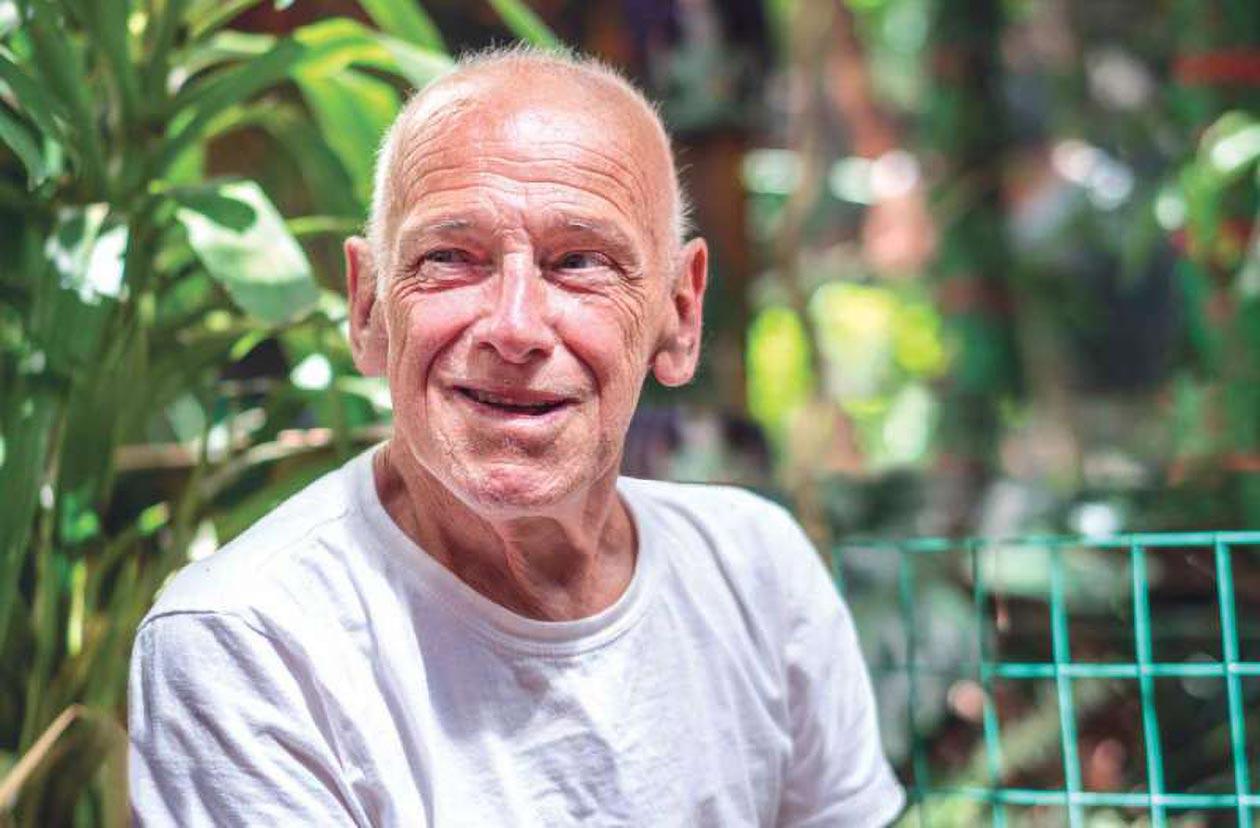An Interview with Matt Elmes, PhD
March 22, 2023

As cannabis becomes more normalized, calls for research into this beneficial plant are growing ever louder. The scientific community is increasingly devoting time and resources to studying cannabis, the cannabinoids produced by the plant, and how these substances interact with the human body. CannaCraft is very proud to employ our Director of Scientific Affairs, Matt Elmes PhD. A graduate of Stony Brook University with a focus on cannabinoid science, Dr. Elmes supervises new product development, pioneering innovations and educational initiatives across all CannaCraft brands. Matt is always teaching us new things about the amazing power of cannabis!
In this interview, you’ll learn about Matt’s past experience studying cannabinoids and the endocannabinoid system (ECS), his journey with cannabis, and what he currently finds most fascinating about the plant.
André: Why don't you introduce yourself and tell us what you do?
Matt: My name is Matt Elmes. I'm the Director of Scientific Affairs at CannaCraft. I take care of overseeing the lab testing needs, guide the quality department in stability experiments and implement ways we can improve our current products. I handle education initiatives and general guidance for the entire CannaCraft workforce, advising on anything that could be related to cannabinoid science or science in general.
A: What are your qualifications for this role and what sparked your interest in cannabis?
M: I received my Ph.D. in Molecular & Cellular Biology from Stony Brook University in 2018. I focused on cannabinoid science for my doctoral degree. I’m a long time cannabis user and I’ve always been really fascinated in learning about how the endocannabinoid system works in our body. I’ve also always been a science minded guy. I got my undergrad and masters degrees in biology then I worked as a lab technician in a PTSD lab for a few years in NYC. I eventually began my doctorate program and connected with a research laboratory that was doing endocannabinoid system research and fell into this world of cannabis and cannabinoid science. I’ve been completely enamored by it ever since.
A: Can you tell us a bit more specifically about what your research consisted of?
Well, there are a lot of really cool research projects I’ve been involved with over the years, but I think my biggest contribution to the cannabis science field is discovering how phytocannabinoids like THC and CBD are transported throughout the cells in our body. All of our cells are essentially bubbles of oil (aka the plasma membrane) that is filled with water (aka the cytoplasm). Oil and water do not mix…. go take a look at the vinaigrette salad dressing in your fridge for proof of this! Cannabinoids are oil-like so they stick to the plasma membrane and HATE mixing with water. However, the enzymes that metabolize cannabinoids are found on the inside of our cells, so we knew that THC/CBD must pass through the watery cytoplasm somehow, but nobody at the time really knew how.
My mentors and I found a class of proteins known as ‘FABPs’ that pick up the THC and CBD molecules, carry them inside our cells, and pass them off to their metabolic enzymes. The FABPs sort of act like boats to shuttle the cannabinoids through the water to where they need to go. I first showed this process happening in test tubes and cultured dishes of cells. We were excited by this big finding and published that data in 2015. The whole cellular transport process had big implications for our current understanding of how cannabinoids get processed by our bodies, so I wanted to dig into this aspect further and demonstrate that the transport process actually happens in real life organisms too, rather just in a plate of cells. So, I wrote a successful grant to NIDA and got funding to study this THC transport and metabolism process in rodents. This ended up turning into a really nice study that showed (among other things) that mice which do not have these FABP proteins in their livers exhibit deficiencies in their ability to metabolize THC. We published this work just last year.
It was really amazing to get experimental validation for a hypothesis that I was working on for years, and in the process advance mankind’s understanding of how cannabinoids are working inside our bodies!
A: Tell us what your research on this complex system has made you realize.
M: It’s challenging because the ECS is so complex, and there’s still so much we have yet to understand. It’s such a new field, and because the ECS is a lipid-based system, there are some inherent limitations and extra challenges on how we are able to study it. First, we need to separate CB1 signaling vs. CB2 signaling. So for people that don't know, we have two main types of cannabinoid receptors in our bodies called the CB1 and CB2 receptors. They basically sit on the surface of our cells and listen for signals that tell us if aspects of our body are out of balance. The intricate ECS signaling pathways that the body has evolved is totally fascinating. It made me realize that, in many ways, we are still only in our infancy of our understanding of cannabinoid actions and the ECS.
A: How does the CB1 receptor differ from the CB2 receptor?
The difference is mostly where they are located and the systems that they regulate. So CB1 receptors are primarily found throughout our brain and nervous system. It's one of the most highly expressed receptors found in our brain, but there's very few CB2 receptors there. CB2 receptors are mostly expressed in our peripheral tissues, especially our immune system. CB2 might actually work as a homeostatic mechanism in immune signaling, in that when an immune cell’s cytokine production is ‘turned up too high’ CB2 gets activated and dials it back down a bit. This is what scientists mean when we say ECS signaling is ‘immunomodulatory’.
A: How does cannabis come into this?
M: The cannabis plant expresses compounds called phytocannabinoids. For example, THC and CBD are phytocannabinoids. Phytocannabinoids are cannabinoids that come from plants, whereas endocannabinoids are cannabinoids that are made by our bodies. So THC in cannabis basically mimics what our endocannabinoids are doing by binding and activating our CB1 and CB2 cannabinoid receptors. Cannabinoids from cannabis are like a ‘key’ that fits into the specific ‘lock’ of these receptors, just like the endocannabinoids that our body produces. There are currently no plants other than cannabis known to produce phytocannabinoids. It seems to be entirely unique to the cannabis plant!
A: Lastly, what has been fascinating you in cannabis recently?
M: Honestly so many things, it depends on what we’re trying to do. There’s been such a dearth of high-quality clinical cannabinoid research, largely resulting from federal prohibition, but there’s been more and more cannabinoid clinical trials going on these days which is really exciting. I also think biosynthesis of phytocannabinoids is really fascinating. Basically, scientists are now taking the enzymes that make THC and CBD out of the cannabis plant and putting those enzymes into yeast or other microbes. They are brewing phytocannabinoids just like you would a beer!
I think that the brew process is really cool and actually might be one of the most efficient ways for the future industry to get high purity yields of the minor cannabinoids which are only expressed at low levels in the plant. Novel cannabinoids also fascinate me, a group of Italian scientists actually found some new phytocannabinoids last year that we did not previously even know existed! As a cannabis user, everything about the whole topic interests me. I’m happy to end up where I did, it’s been a really interesting career path so far!
If you are interested in taking a deeper dive into Matt’s research, click the link below:
https://news.stonybrook.edu/homespotlight/biochemistry-alum-educates-public-on-medical-benefits-of-cannabinoids/




